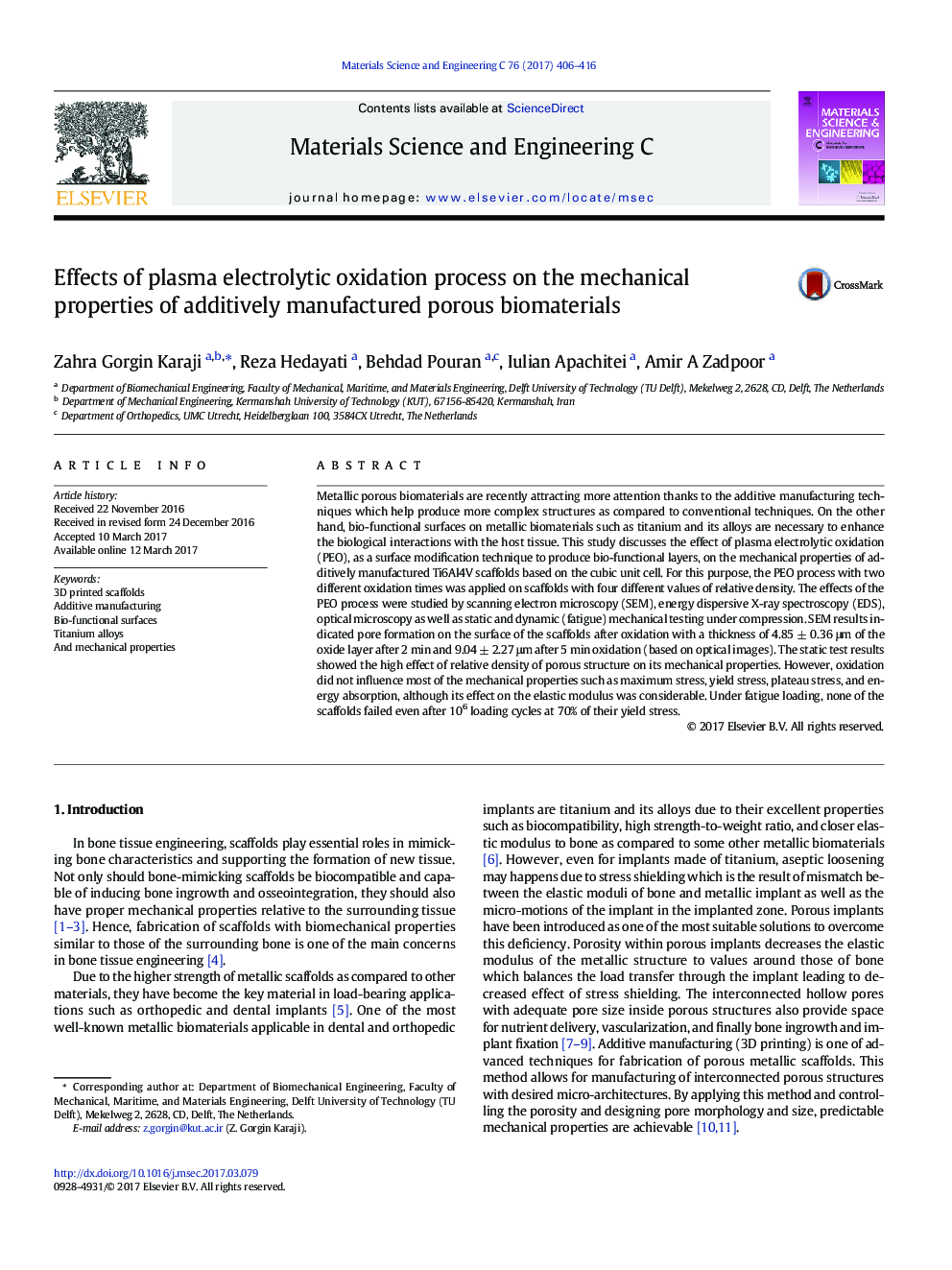| کد مقاله | کد نشریه | سال انتشار | مقاله انگلیسی | نسخه تمام متن |
|---|---|---|---|---|
| 5435132 | 1509145 | 2017 | 11 صفحه PDF | دانلود رایگان |
- Oxidation and pore formation on the additively manufactured Ti6Al4V scaffolds through plasma electrolytic oxidation (PEO).
- The high effect of scaffold's relative density on its static and dynamic mechanical properties.
- No influence of the oxidation on maximum stress, yield stress, plateau stress, and energy absorption.
- Considerable effect of oxidation on the elastic modulus
- Fatigue loading with no fail after 106 loading cycles at 70% of scaffold's yield stress.
Metallic porous biomaterials are recently attracting more attention thanks to the additive manufacturing techniques which help produce more complex structures as compared to conventional techniques. On the other hand, bio-functional surfaces on metallic biomaterials such as titanium and its alloys are necessary to enhance the biological interactions with the host tissue. This study discusses the effect of plasma electrolytic oxidation (PEO), as a surface modification technique to produce bio-functional layers, on the mechanical properties of additively manufactured Ti6Al4V scaffolds based on the cubic unit cell. For this purpose, the PEO process with two different oxidation times was applied on scaffolds with four different values of relative density. The effects of the PEO process were studied by scanning electron microscopy (SEM), energy dispersive X-ray spectroscopy (EDS), optical microscopy as well as static and dynamic (fatigue) mechanical testing under compression. SEM results indicated pore formation on the surface of the scaffolds after oxidation with a thickness of 4.85 ± 0.36 μm of the oxide layer after 2 min and 9.04 ± 2.27 μm after 5 min oxidation (based on optical images). The static test results showed the high effect of relative density of porous structure on its mechanical properties. However, oxidation did not influence most of the mechanical properties such as maximum stress, yield stress, plateau stress, and energy absorption, although its effect on the elastic modulus was considerable. Under fatigue loading, none of the scaffolds failed even after 106 loading cycles at 70% of their yield stress.
Journal: Materials Science and Engineering: C - Volume 76, 1 July 2017, Pages 406-416
